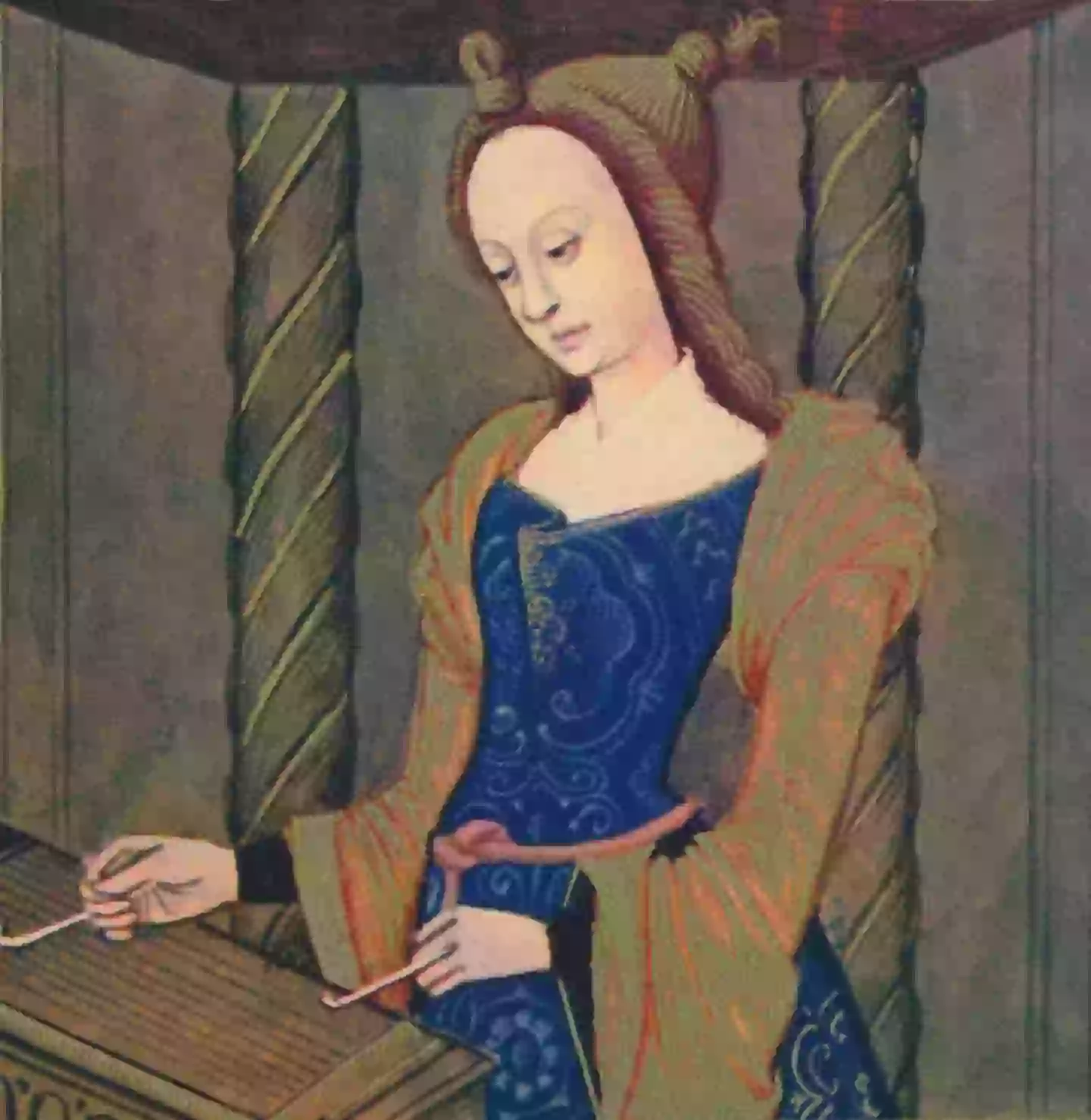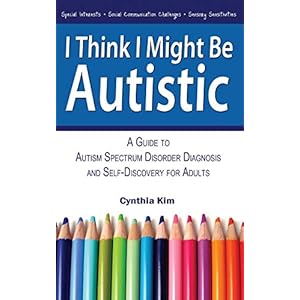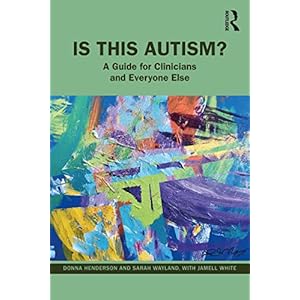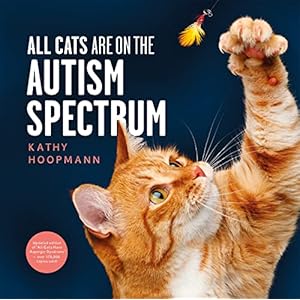When researching this, I wanted to find all the facts about this, including the harmful rhetoric. Read or listen to with caution.
What is Cassandra Syndrome?

Often an undiagnosed autistic man is in a relationship with a neurotypical woman and the woman begins to realize that their partner is neurodivergent. They then try to explain what their relationship is like with an autistic partner and no one believes them. That is Cassandra Syndrome, Cassandra Affective Deprivation Disorder (CADD), Cassandra Metaphor, Cassandra dilemma, and Cassandra predicament.
CADD is a folk disorder. A folk disorder is a combination of psychiatric and somatic symptoms that are considered to be recognizable only within a specific society or culture. In this case, it is partners of autistic people.
People experiencing CADD often feel misunderstood and unheard. This leads to feelings of isolation and frustration within the relationship. When someone is not believed, it can lead to feelings of powerlessness because the person knows something is not right but cannot change the course of events because no one believes them.
CADD draws on cis/hetero/normative rhetorics of risk that attend autism’s figuration as a disorder of invisible and emotions disrepair, where not doing autistics is comparable to becoming them. CADD proponents exalt divisions between logic and emotion in their appeals to ableist, anti queer understands of autistic emotion, communication and interrelation.
The name Cassandra Syndrome was coined by a Massachusetts non profit called Families of Adults Afflicted with Asperger’s Syndrome (FAAAS) in 2000. Just the name of this organization shows that it is hugely problematic.
It was later popularized by a therapist Maxine Aston in the United Kingdom. It describes a specific type of emotional and psychological distress experienced by partners of autistic men.
Why it is Called Cassandra Syndrome
The story of Cassandra and Apollo
It was originally called the Cassandra Phenomenon. It has this name because it references to the eponymous priestess Cassandra from Greek mythology with the ability to see the future. Cassandra was the daughter of King Priam and Queen Hecuba of Troy. This made her the princess of Troy. Tory was a powerful city-state.
Due to her royal lineage, she was placed at the heart of Trojan society and politics. This made her warnings about the city’s fate more poignant. It came from intimate knowledge of the kingdom and its people. Her siblings were Hector, valiant Trojan warrior, and Paris whose actions started the Trojan War.
Because she was a Trojan priestess, she was dedicated to the g-d Apollo. Cassandra was known for her beautify and intelligence. He was captivated by her and granted her the gift of prophecy one exchange for her love.
When she rejected him, Apollo cursed her. She still kept her gift of premonition but no one ever believed her no matter how accurate they were. This caused Cassandra to suffer as she’s tried in vain to use her gift to benefit others.
Her gift was transformed into a source of constant torment. It was not just an inconvenience, it was a deep psychological burden. She was forced to have the knowledge of impending disasters, yet was powerless to stop them.
Cassandra watched helplessly as her prophecies materialized, her warnings dismissed as a mad ramblings. The cycle of knowing the truth but unable to change it lead to much frustration, disappear and isolation.
Cassandra had a twin brother named Helenus. He also had the gift of prophecy. His prophecies, however, were believed. The difference in how prophecies were perceived shows how cruel Apollo’s curse really was.
Interpretation of Cassandra
Melanie Klein, a psycho analyst interpreted her Cassandra in 1963 as reflecting the human and moral conscience. Her primary function was to deliver warnings.
Predicts ill to come and warns that punishment will follow and grief will arise.
Cassandra’s need to point out moral transgressions and the resulting social consequences is driven by what Klein referred to as “the destructive influxes of the cruel super ego.” This is represented in Greek myth by the g-d Apollo, Cassandra’s overlord and persecutor.
Cassandra predicted the fall of Troy and other disasters. She also predicted the death of Agamemnon but no one listened.
In a 1989 essay on the g-d Apollo, Jean Shinoda Bolen, a clinical professor of psychiatry at the University of California, detailed a profile of the “Cassandra woman.”
Bolen suggested that it was someone suffering from a dysfunctional relationship with an “Apollo man.” It was a parallel to the relationship between Cassandra and Apollo. Bolen said that the Cassandra lady may have “hysterical” overtones es and may be dismissed when telling others about what she knows.
Similar to Cassandra’s experiences, the Cassandra Syndrome is characterized by a person’s experience of not being believed or understood when they discuss their struggles in relationships with autistic individuals.
Causes of CADD
The autistic person shows:
- Lack of emotional reciprocity
- Unable to show their empathy or compassion
- May not be skilled at seeing another’s point of view
- Miss nonverbal emotional cues
- May not recognize the consequences of their own actions
- Struggles with impulse control and emotional regulationMay not learn from experience
- Lack the ability to assess complex personal situationsDon’t
- Understand their own actions affect others
Relationship Trauma
Cassandra syndrome is a type of relationship trauma that some experts include it in the category of complex PTSD.
The symptoms are:
- Anxiety- persistent worry or fear, often about the relationship pr persona adequacy
- Anger or guilt- experiencing frustration toward their partner and guilt for feeling this way
- Hypervigilence
- Dissociation
- Extreme disappointment with the relationship- leaves the person feeling disappointed or disillusioned with their partner or relationship dynamic
- Confusion- struggling to understand why your emotional needs are unmet or misunderstood.
- Low self esteem- doubting your worth or attractiveness
- Loss of self identity- feeling lost or unsure about themselves
- Loss of faith in oneself- doubting their perceptions and emotions
- Anger and frustration- frequent feelings of irritation or resentment
- Listlessness and depression- a lack of energy and interest in activities, coupled with feels of sadness
- Phobias or social phobias- developing fears, particularly in social situations
- Developing autistic traits or behaviors- adopting traits or behaviors of the autistic partner
- Migraines- frequent, severe headaches
- Weight changes- significant loss or gain in weight
- Premenstrual tension- heighten emotional and physical symptoms before menstruation
- Low immune system- increased susceptibility to illness
They are not the result of a singular traumatic event. They stem from an ongoing lack of intimacy and social connection, emotional deprivation and a profoundly disharmonious relationship.
“By the time you get to a therapist, they’re so distraught, and they;’r so stoic,” said Margot Alexis, founder of the membership support group, Healing Cassandra.
This particular dynamic leaves many women feeling unheard, frequently viewed as hysterical.
“Historically, women have often been labeled as Histrionic’ – exaggerating, over explaining their concerns, making a big deal out of something,” said psychologist Kennith Roberson.
Autistic men in the relationship often present as very calm and collected. They may be oblivious to how their neurodivergent behaviors affect their partners and they can be very convincing.
This is what causes women in the “Cassandra relationship” to have self doubt and inner turmoil. There are many years spent enmeshed in trying to fix their husband.
Autistic Point of View
Many in the autistic community believe that the concept of Cassandra syndrome erases the experiences of people who don’t follow traditional genders or gender roles.
One paper argues that the syndrome relies heavily on sterotypical understandings of autism. Especially the misconceptions that being autistic is intertwined with extreme maleness. This comes from the theory of the male brain by Sir Simon Baron-Cohen.
This idea many not resonate with women gender diverse and queer autistic people. Their partners may feel snubbed due to this fact as well.
The problem of this is when it comes to disability, the disabled person needs to be listened to.
This folk disorder is said to be caused by being in a relationship with an autistic person. It compares marrying an autistic person to enduring complex post traumatic stress disorder.
Anything discussed about autism is open for pushback or harmful rhetoric. Some examples are chlorine dioxide and vaccines.
Due to the social panic of autism, CADD views autism as a sexual and rhetorical disability.
CADD makes autistic people seem like robots.
Neurotypical Point of View
The authors of this same paper stated that straight, cisgender, NT belief systems exaggerate the idea of Cassandra syndrome.
Many online support groups are for “women only.”
Those who identify with Cassandra syndrome erases the experience the real accumulation of pent up anger. The years of disbelieving and is counting their experiences with an autistic partner leave them frustrated.
“A lot of neurotypical snowmen tend to have a lot of bitterness and resentment because they just wanted a relationship like they see other couples having,” said Alexis.
Addressing Cassandra Syndrome
The first step towards moving beyond Cassandra syndrome is empathy. The neurotypical brain and the autistic brain have different wiring.
Educate the autistic partner. The neurotypical partner should share information about CADD and how it affects the NT partner. Resources like books, articles or therapy sessions to help them understand the perspective of the NT partner can be helpful. It’s important to stay curious and non judge mental when approaching the autistic partner.
The NT partner should express their needs clearly. They should be specific on what they need from their partner. It could be emotional support, understanding or shared activities. Autistic people respond well with clear communication without much need for decoding what the intended message is.
The NT partner should seek professional help. Couples therapy with a therapist who is experienced with neurodivergent relationships. Therapy can provide a safe space to express feelings or develop strategies to improve communication. Managing CADD can be mentally tiring . Extra support can help mitigate some challenges and provide the couple a good structure to work on together.
Connecting with people in similar situations can educate and empower wiseman to ultimately improve their relationships and see inner happiness. Alexis and her fellow “Cassandra women” continue to support one another, even after their husbands accept their diagnosis.
Taking responsibility for your own happiness i key to healing Cassandra syndrome, according to Alexis. Helping the autistic husband acquire neurodiversity end communication skills will also help. She recommends realistic expectations, researching autism and connecting with support systems.
Examples of strategies for the NT Partner
Journal thoughts and feelings. Writing down feelings can help process and prepare for discussion with the autistic partner. Journaling is a great way to reflect on what was said and how it made them feel. It can make the NT person aware of triggers. This is beneficial to both partners.
Establish regular checking. Block out time each week to discuss feelings and concerns with each other. This keeps the flow of communication consistent. Setting up discussions as part of relationship maintenance will benefit both partners. Both partners will both know that they will discuss things.
Focus on self care. Prioritize wellbeing by engaging in activities that are relaxing and spoon generating.
Examples are :
- Excercise
- Meditation
- Hobbies
- Spending time with supportive friends and family
Everyone gets caught up in the idea that partners must meet the other partner’s every need. This is not the case. Self care ensures that the person in question is taking care of themselves in other ways. They can identify where their partner adds the most value in their life and prioritize ways to maximize that as a couple.
Getting the Correct Information about Autism
There are a lot of groups out there. The parent groups for neurotypical parents of autistic children are toxic and martyrs to their own kids. There are groups for partners with the same ideology. These are the groups to stay away from.
Find groups that center the autistic partner being themselves but being able to find your own inner happiness.
Stay away from quack cure groups. It is all about support and not trying to fix each other.
Stay away from the tragedy narrative. With these tools, the relationship could become stronger.
CADD is a rhetoric of ableism. It twists the disabled experience into neurotypical problems. It puts stress on the stereotypes that so many autistic people are fighting against. When it comes to the autistic experience. Who should be believed? The autistic person or their neurotypical partner?
Sources
https://psychcentral.com/autism/feeling-invisible-in-the-asperger-world#recap
Melanie Yergeau (2020) Cassandra Isn’t Doing the Robot: On Risky
Rhetorics and Contagious Autism, Rhetoric Society Quarterly, 50:3, 212-221, DOI:
10.1080/02773945.2020.1752132
Trending Products

Schylling NeeDoh Groovy Fruit ̵...

Lofus Adults Weighted Blanket 15lbs

Pure Enrichment WeightedWarmth R...

I Think I Might Be Autistic: A Guid...

Is This Autism?

All Cats Are on the Autism Spectrum

ADHD Planner Hard Bound

Made in USA Womens Leggings 100% Co...

Nautica Girls’ School Uniform...


